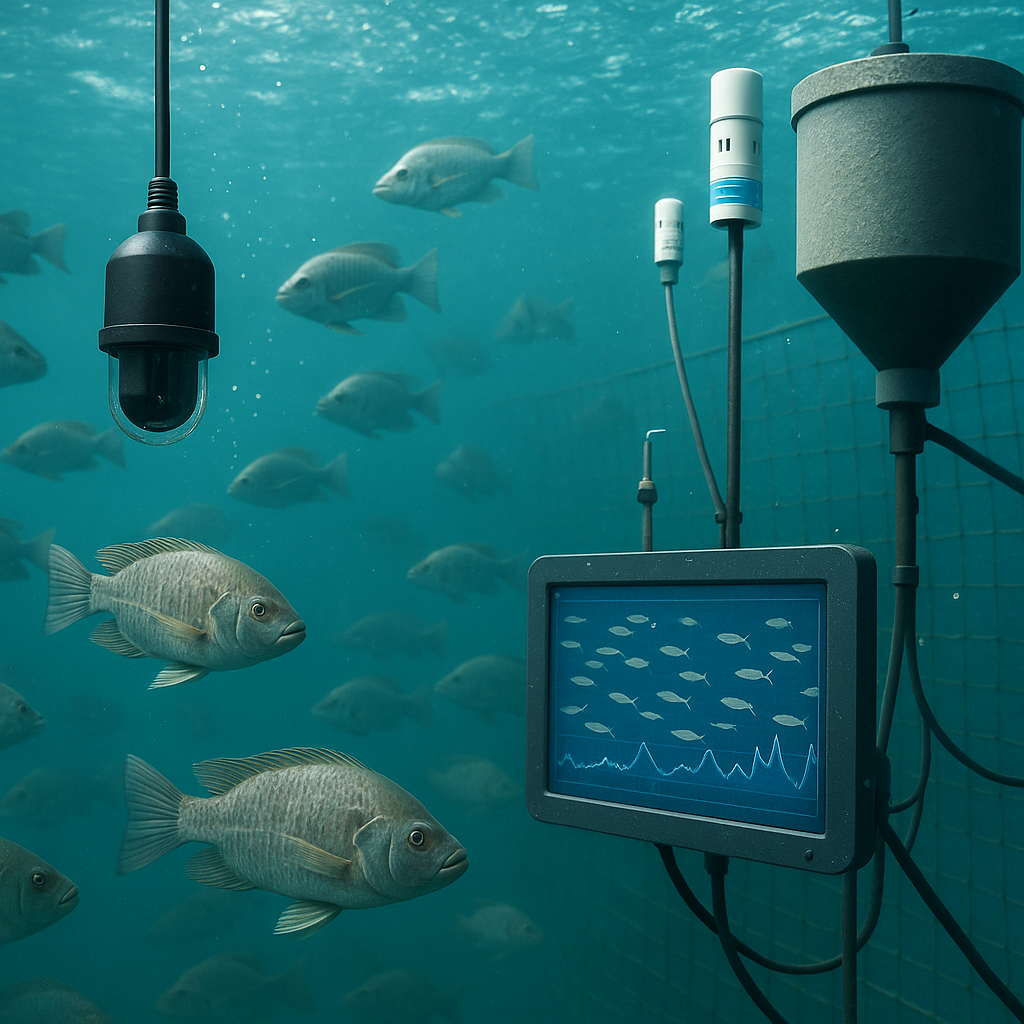AIoT’s game-changing role in tackling aquaculture challenges
The integration of AI and IoT is redefining traditional aquaculture methods by embedding intelligence into every phase of aquatic farming. IoT devices like sensors and cameras capture real-time environmental and biological data, which is then processed by AI algorithms to enhance decision-making and automate labor-intensive tasks. These include smart feeding, disease detection, water quality management, fish behavior monitoring, and automated counting.

The global aquaculture industry is undergoing a high-tech transformation as researchers spotlight the pivotal role of AIoT (Artificial Intelligence of Things) in reshaping fish farming and aquatic food production. As the planet's population edges closer to 10 billion, the pressure on protein-rich food systems intensifies, demanding innovation to meet nutritional needs without overburdening the environment.
The latest research, “Integrating AIoT Technologies in Aquaculture: A Systematic Review,” published in Future Internet, consolidates more than 150 studies to provide a sweeping overview of how AI and IoT are jointly revolutionizing this critical sector.
How is AIoT being deployed to manage core aquaculture operations?
The integration of AI and IoT is redefining traditional aquaculture methods by embedding intelligence into every phase of aquatic farming. IoT devices like sensors and cameras capture real-time environmental and biological data, which is then processed by AI algorithms to enhance decision-making and automate labor-intensive tasks. These include smart feeding, disease detection, water quality management, fish behavior monitoring, and automated counting.
For instance, smart feeding systems use acoustic and computer vision sensors analyzed through deep learning models to adjust feeding schedules based on appetite signals, resulting in increased growth rates and reduced feed waste. In water quality management, deep neural networks such as CNNs and LSTMs forecast critical parameters like dissolved oxygen, pH, ammonia, and salinity. Early disease detection leverages image-based AI models like U-Net, YOLO, and ResNet, identifying symptoms such as abnormal swimming patterns or lesions in high-resolution imagery.
Advanced monitoring of fish behavior through AI also provides early warnings for stress and disease, using motion sensors, acoustic telemetry, and transformer-based models like EchoBERT. Furthermore, counting systems powered by YOLOv5, CNNs, and acoustic echograms offer real-time biomass estimates, aiding stock management and feeding optimization.
What are the research gaps holding back AIoT’s full potential in aquaculture?
Despite the clear advantages, the study identifies several research gaps that are hampering broader AIoT adoption. Notably, the application of AI in broodstock management, key to reproductive success in aquaculture, remains underdeveloped. The authors argue for the use of AI in analyzing genetic and hormonal data to optimize breeding pair selection and monitor reproductive health.
Another significant limitation is the lack of multimodal AI systems that can synthesize diverse data sources such as acoustic signals, sensor readings, genetic profiles, and video feeds. Current models are often siloed, missing complex correlations that could enhance system adaptability and accuracy. Similarly, while AI solutions are abundant for finfish, they are scarce for crustacean aquaculture, particularly species with complex life cycles like mud crabs. Tailored AI approaches are urgently needed for larvae monitoring, reproductive tracking, and environmental control in these systems.
Sustainability-related predictive analytics are also sparse. Most AI models focus on detection rather than forecasting disease outbreaks, optimizing energy use, or reducing ecological footprints. Finally, the study warns of poor generalizability among AI models, which often fail to adapt to varied environments, species, and aquaculture systems. More adaptive and transfer learning techniques are essential to make AI models scalable across regions and species.
What are the practical challenges to implementation and what lies ahead?
Implementing AIoT in real-world aquaculture settings is not without hurdles. High initial costs, the need for robust infrastructure, and the requirement for skilled technical personnel make adoption difficult, especially for small to medium-sized farms. The variable nature of aquatic environments complicates AI model reliability, while data security concerns loom large due to continuous, sensitive data collection.
Scalability is further hindered by the limited adaptability of AI models and the complex calibration required for different species and environmental conditions. Additionally, physical deployment challenges, such as sensor biofouling, corrosion, and wireless communication in remote or underwater settings, demand innovative hardware and energy solutions.
To address these issues, the authors propose a roadmap centered around real-time decision-making, multimodal data integration, and adaptive learning models. Digital twin technology is highlighted as a frontier approach for simulating and optimizing aquaculture systems virtually. Further, mobile-compatible and offline-capable AIoT systems can democratize access, especially in low-resource or offshore contexts. Advanced robotics and automation, integrated with biosensing technologies, are also poised to play a transformative role in autonomous monitoring, feeding, and health management.
- FIRST PUBLISHED IN:
- Devdiscourse










